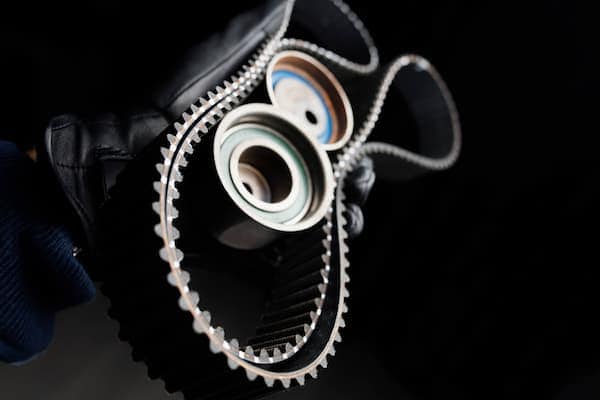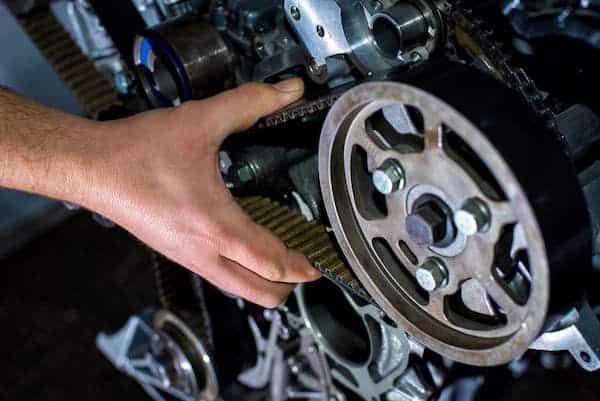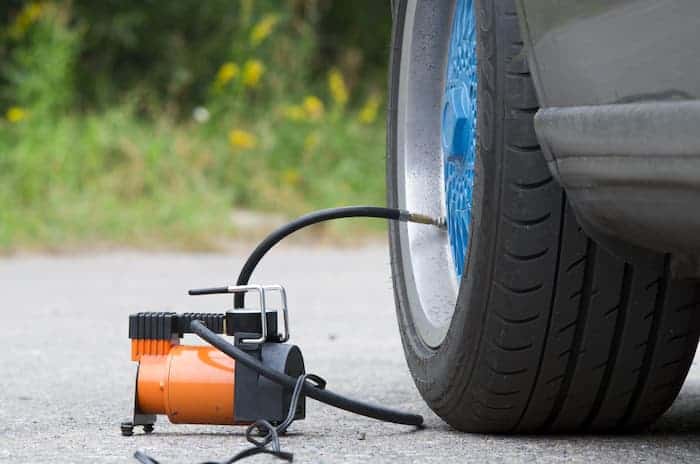When pondering the question, “How do I know if my timing belt has been replaced?” it’s essential to recognize the significance of this component in your vehicle’s engine. A timing belt in good condition is crucial for smooth engine performance and longevity. This guide aims to provide a pleasant and straightforward approach to help you identify whether your timing belt has been replaced, ensuring your vehicle remains in top-notch condition.
Table of Contents
ToggleSigns That Indicate a Timing Belt Change

- Service Records: The most straightforward way to determine if the timing belt has been changed is by checking the vehicle’s service records. Regular maintenance records should indicate if and when the timing belt was replaced.
- Physical Inspection: A visual inspection of the timing belt can reveal a lot about its condition. Look for signs of wear and tear, such as cracks, fraying, or a glossy appearance on the belt’s surface.
- Mileage Check: Most manufacturers recommend replacing the timing belt at specific intervals, usually between 60,000 and 100,000 miles or every 5 years. If your car is approaching or has surpassed this range, it’s likely time for a change.
- Performance Issues: Sometimes, the car itself gives clues. Difficulty starting the engine, a rough idling engine, or a noticeable decline in engine performance can all be symptoms of a bad timing belt.
Why Regular Timing Belt Checks are Crucial

- Engine Health: The timing belt synchronizes the crankshaft and camshaft rotations. A failure can cause severe engine damage.
- Cost-Effective: Regular checks and timely replacement can prevent more expensive repairs down the line.
- Safety: A snapped timing belt while driving can lead to dangerous situations.
DIY Inspection vs. Professional Assessment

While some car enthusiasts feel comfortable inspecting timing belts, it’s often best to seek professional help, especially if you’re unfamiliar with car mechanics. A professional mechanic can provide a more thorough inspection and can also check related components that might be affected, such as the water pump and pulleys.
When to Consult a Professional
- Uncertain History: If you’re unsure about the car’s maintenance history, a professional assessment is advisable.
- High Mileage Vehicles: Cars with high mileage might need a more thorough check, considering the wear and tear on various components.
DIY timing Belt Checks
- Visual Inspection: If you’re familiar with car components, a visual inspection can be your first step.
- Listening for Noises: Unusual noises from the engine area can indicate timing belt issues.
Conclusion
Regular checks and maintenance of the timing belt are essential for the longevity and safety of your vehicle. Understanding the signs of wear and when to seek professional help can save you from unexpected breakdowns and costly repairs. For a deeper understanding of the timing belt’s function.
Remember, staying informed and proactive about your car’s maintenance is the key to a smooth and safe driving experience.
FAQ - Timing belt
Yes, if you have basic knowledge of car mechanics, you can perform a visual inspection to check for signs of wear like cracks or fraying.
The cost can vary depending on the vehicle model and labor charges, but it’s generally considered a significant maintenance expense.
Yes, a worn or improperly tensioned timing belt can affect the engine’s timing, leading to reduced fuel efficiency.
It’s often recommended to replace the water pump, tensioners, and pulleys along with the timing belt as a preventative measure.
Check the vehicle’s service records or maintenance history. If there’s no clear record, a professional mechanic can assess the condition of the timing belt.




